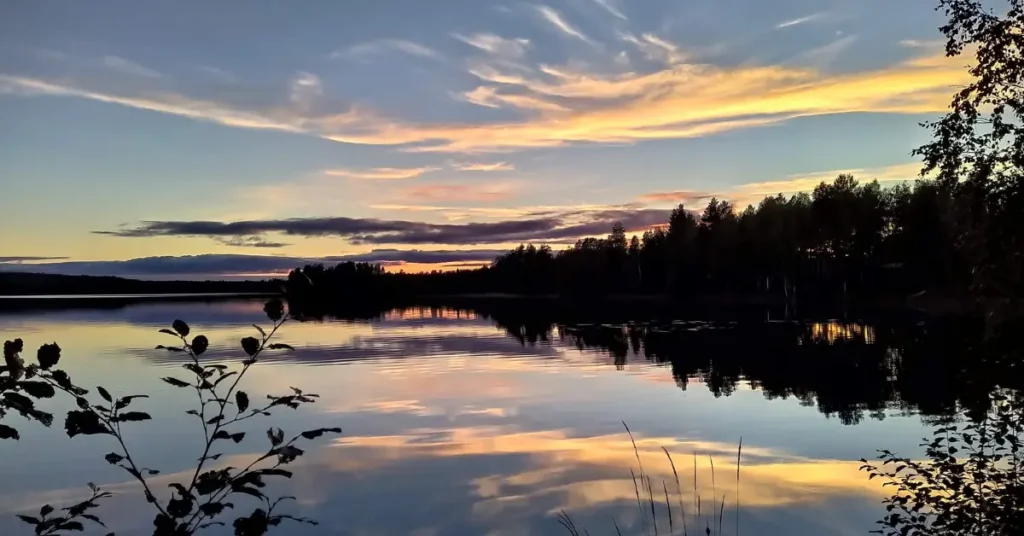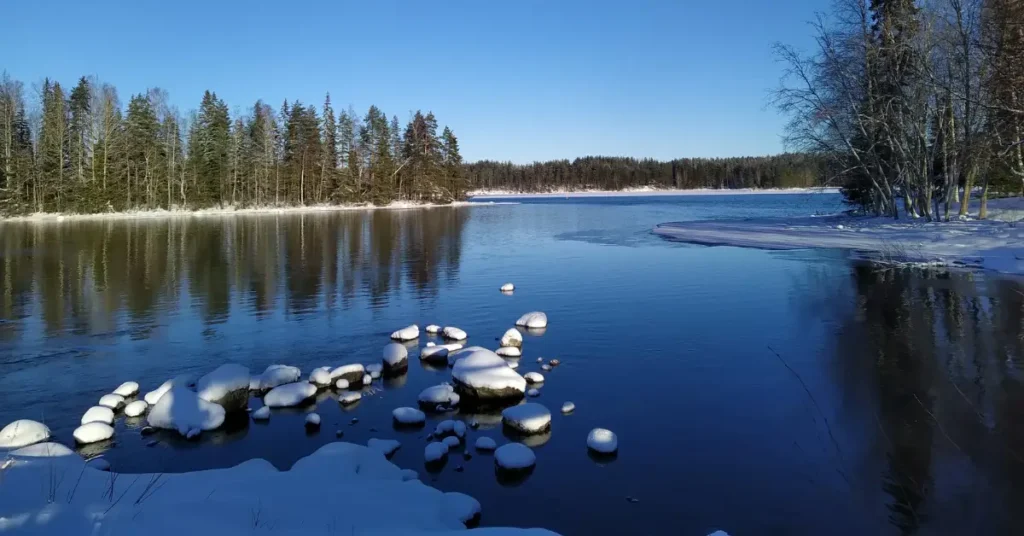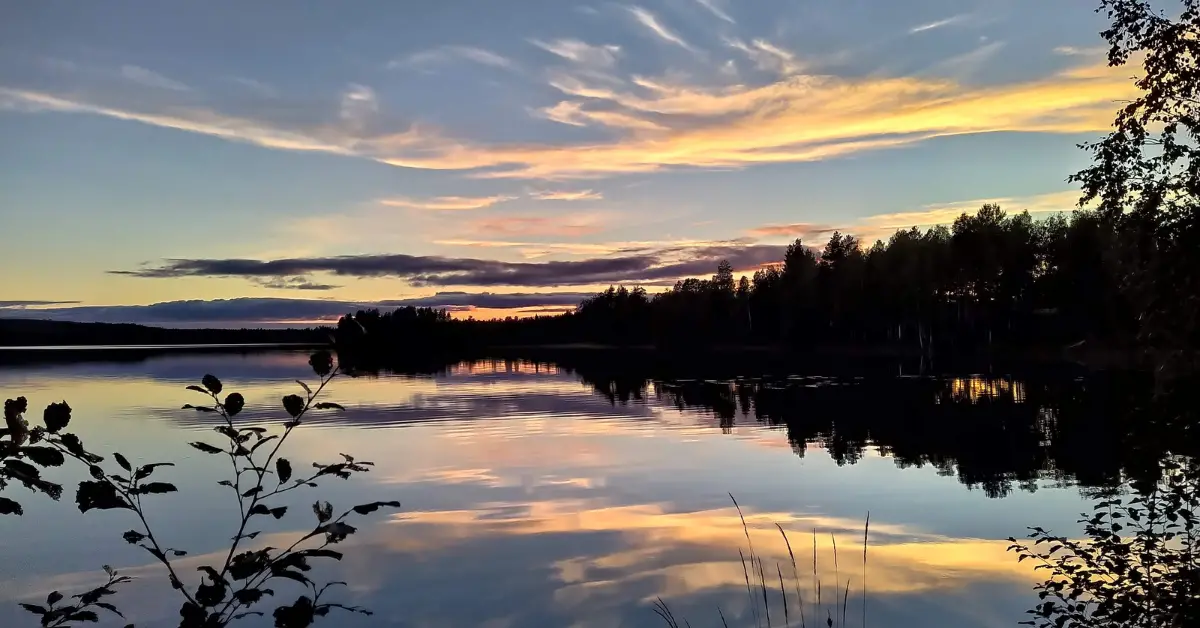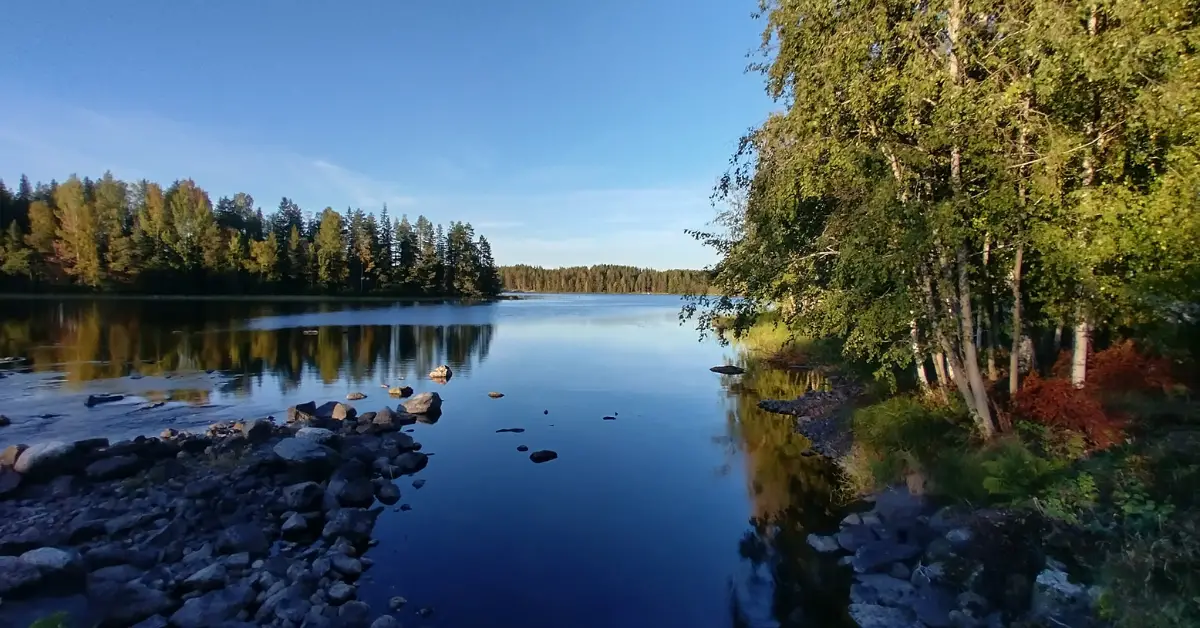Winter Bird-watching in Finland: Secrets of the Silent Forest
Discover the enchanting world of Nordic winter birding, where snow-covered landscapes reveal Finland’s most elusive and spectacular species
Welcome to Finland's Most Magical Birding Season
Winter in Finland transforms the country into a pristine, snow-covered wonderland where the silence of the frozen landscape is broken only by the calls of the north’s most resilient and remarkable birds.
While many species have departed for warmer climates, those that remain – along with special northern visitors from even colder regions – offer birding experiences found nowhere else in Europe.
This is the season of the Great Grey Owl gliding silently through snow-laden forests, of Bohemian Waxwings descending in colorful flocks to feast on rowan berries, and of magnificent White-tailed Eagles fishing in the few remaining patches of open water.
Winter birding in Finland requires dedication, proper preparation, and patience, but the rewards are extraordinary – intimate encounters with species that are the stuff of legend among European birders.
The short days and harsh conditions create unique opportunities.
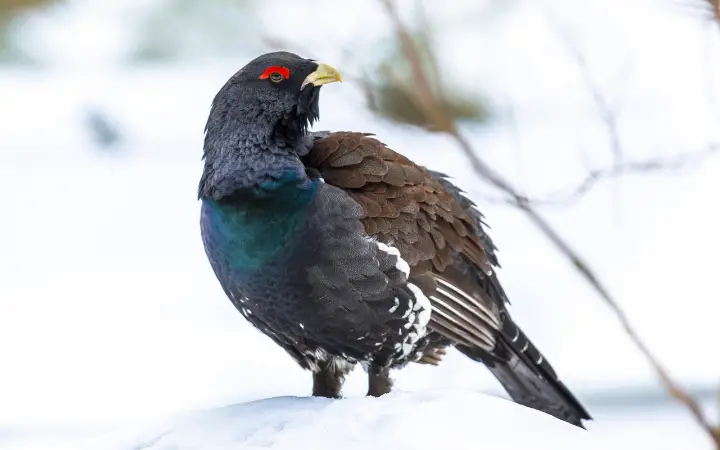
Many species become more approachable as they focus on survival rather than territory defense.
Feeding stations transform into vital congregation points where multiple species gather, offering exceptional viewing and photography opportunities.
The snow-covered landscape provides striking backdrops and makes birds more visible against the white canvas of the Nordic winter.
From the famous owl forests of Kuusamo to the urban parks of Helsinki where northern finches gather at feeders, winter birding in Finland offers adventures that range from wilderness expeditions to accessible urban encounters, all united by the special magic that only comes when the northern forests are locked in winter’s embrace.

What Makes Winter Birding Special in Finland?
The Owl Kingdom Comes Alive
Winter is universally acknowledged as the premier season for experiencing Finland’s legendary owl populations:
- Increased Activity: Many owl species become more active during daylight hours in winter
- Habitat Visibility: Bare trees and snow cover make owls easier to spot
- Territorial Behavior: Winter territorial activity makes owls more vocal and visible
- Photography Opportunities: Snow provides stunning contrast for photography
- Multiple Species Possible: Single trips often yield encounters with several owl species

Northern Finch Invasions
Winter brings spectacular irruptions of northern finch species:
- Pine Grosbeak Invasions: Some winters see massive movements south
- Bohemian Waxwing Flocks: Irregular but spectacular appearances in large numbers
- Redpoll Gatherings: Common and Arctic Redpolls in mixed feeding flocks
- Crossbill Opportunities: Red and Parrot Crossbills following cone crops
- Siskin Concentrations: European Siskins at alder and birch feeding areas
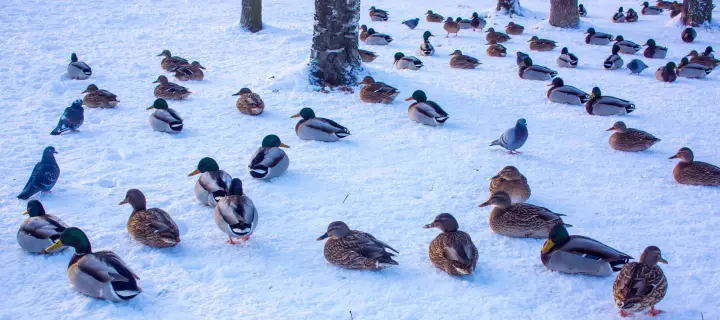
Feeding Station Phenomena
Winter transforms feeding stations into birding hotspots:
- Species Concentrations: Multiple species gather at reliable food sources
- Behavioral Studies: Excellent opportunities to observe feeding and social behaviors
- Photography Paradise: Close approaches and predictable locations
- Urban Accessibility: City parks and gardens become productive birding locations
- Family-Friendly: Accessible experiences for birders of all ages and abilities
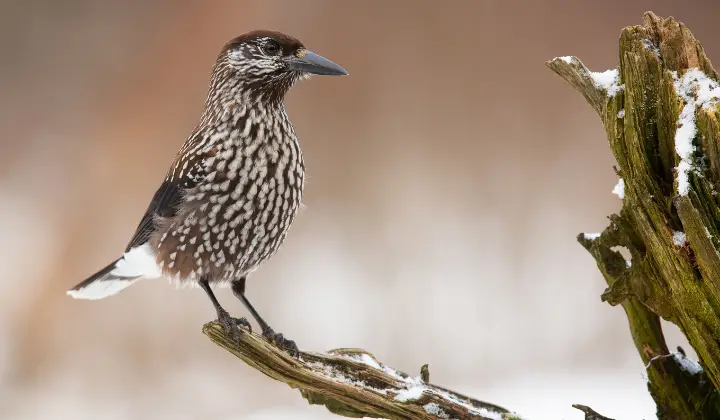
Arctic Specialists and Residents
Finland’s winter residents include remarkable cold-adapted species:
- Ptarmigan: Perfectly camouflaged against snow in their white winter plumage
- Snow Bunting: Flocks of these Arctic breeders enliven winter landscapes
- Dipper: Remarkably active in unfrozen streams and rapids
- Various Tit Species: Including the hardy Siberian Tit in northern forests
- Woodpecker Activity: Easier to locate and observe in leafless forests
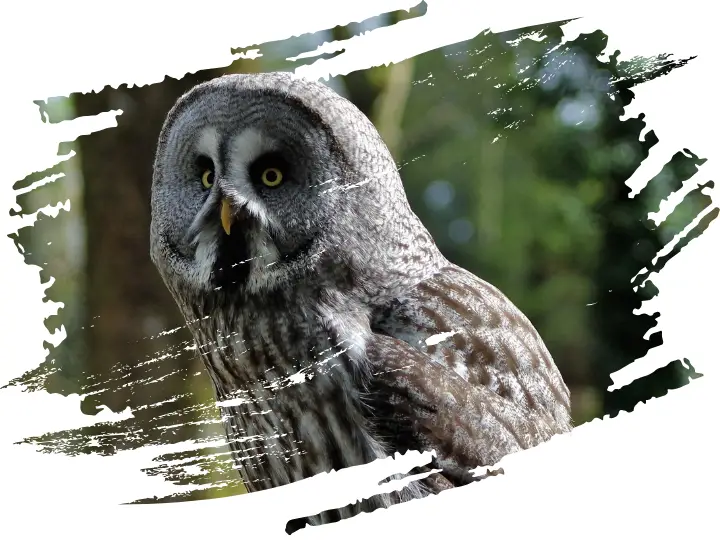
The Winter Birding Calendar: Embracing the Cold Months
November: Transition into Winter
November marks the true beginning of Finland’s winter birding season, as the last migrants depart and winter residents settle into their cold-weather patterns.
Early Winter Arrivals:
- Snow Bunting: First flocks arrive from Arctic breeding grounds
- Rough-legged Buzzard: Some individuals overwinter in southern Finland
- Northern Finches: Initial arrivals of Pine Grosbeak and Bohemian Waxwing
- Gyrfalcon: Extremely rare but occasionally ventures south from Lapland
- Snowy Owl: Irregular visitor in irruption years
Resident Species Activity:
- Owls Begin Winter Patterns: Increased territorial activity and daytime visibility
- Woodpecker Concentration: Species become more active at feeding sites
- Tit Flock Formation: Mixed species flocks form for winter survival
- Corvid Gatherings: Ravens, Hooded Crows, and Magpies in winter groups
What to Expect: Variable conditions as winter establishes itself, with some years bringing early northern invasions
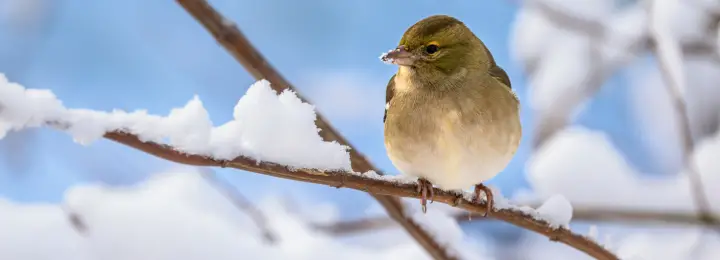
December-January:
Deep Winter Splendor
The heart of Finnish winter offers the most challenging but potentially most rewarding birding conditions.
Peak Owl Season:
- Great Grey Owl: Most active and visible period, especially on calm, snowy days
- Ural Owl: Territorial calling increases, making location easier
- Pygmy Owl: Small but fierce, often active during short daylight hours
- Tengmalm’s Owl: Secretive but occasionally found in suitable forest habitat
- Northern Hawk-Owl: Diurnal habits make this the optimal season for sightings
Feeding Station Bonanzas:
- Urban Parks Transform: City feeding stations become major birding destinations
- Species Diversity: Up to 15-20 species possible at single feeding locations
- Predictable Timing: Regular feeding schedules create reliable viewing opportunities
- Photography Golden Hours: Low winter sun provides exceptional lighting

Northern Visitors Peak:
- Pine Grosbeak: Peak abundance in irruption years
- Bohemian Waxwing: Large flocks strip rowan and other berry-bearing trees
- Redpoll Species: Common and Arctic Redpolls in mixed flocks
- Crossbill Activity: Following spruce and pinecone availability
February: Late Winter Opportunities
February: Late Winter Opportunities
February often provides the most stable winter birding conditions, with established patterns and good snow cover.
Continued Owl Activity:
- Breeding Preparation: Some owl species begin early breeding behaviors
- Territory Establishment: Increased calling and territorial displays
- Pair Formation: Opportunities to observe courtship behaviors
- Nest Site Selection: Activity around potential breeding locations
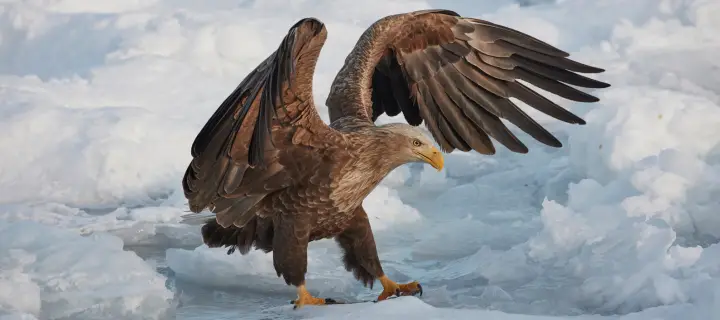
Feeding Station Peak:
- Maximum Diversity: Coldest period drives species to reliable food sources
- Behavioral Observations: Winter social hierarchies clearly established
- Migration Preparation: Some species begin to show signs of restlessness
Late Winter Specialties:
- Waxwing Movements: Flocks often more mobile as berry supplies diminish
- Finch Wandering: Groups move between food sources, creating opportunities
- Eagle Concentrations: White-tailed Eagles gather at remaining open water
Prime Winter Birding Regions
Here’s a seasonal breakdown of what birders can expect throughout spring:

Kuusamo Region – The Owl Capital
Location: Northeastern Finland, near the Russian border
Why It’s Legendary: The birding hotspots in Oulu and Kuusamo are good areas for northern Owls, with vast areas of coniferous forests, peat bogs and mires forming large wilderness areas
The Kuusamo Winter Experience:
- Pristine Taiga Forests: Ancient spruce and pine forests provide perfect owl habitat
- Open Bog Systems: Excellent for spotting raptors and Northern Hawk-Owls
- Reliable Owl Populations: Home to Finland’s most diverse owl community
- Professional Guide Network: Local experts specialize in owl finding
- Winter Infrastructure: Well-maintained roads and accommodation despite remote location
Target Winter Species:
- Great Grey Owl: The star attraction, with reliable populations throughout the region
- Ural Owl: Large and impressive, often found in mature mixed forests
- Pygmy Owl: Tiny but fierce, requires patience but rewards persistence
- Tengmalm’s Owl: Secretive forest dweller, occasionally located by experienced guides
- Northern Hawk-Owl: Diurnal habits make winter encounters more likely
- Siberian Jay: Characteristic taiga species, often curious and approachable
- Pine Grosbeak: Regular winter resident in suitable habitat
Strategic Approach:
- Multiple Day Stays: Owl finding requires patience and multiple attempts
- Weather Flexibility: Best results on calm, snowy days
- Local Guide Recommended: Expert knowledge dramatically increases success rates
- Dawn and Dusk Focus: Peak activity periods for most owl species
- Systematic Area Coverage: Different forest types harbor different species
Practical Considerations:
- Extreme Cold: Temperatures can drop below -30°C (-22°F)
- Limited Daylight: December/January daylight only 4-6 hours
- Road Conditions: 4WD recommended for forest tracks
- Emergency Preparedness: Remote areas require proper safety planning

Oulu Region and Surroundings – Northern Gateway
Location: Central northern Finland around Oulu city
Why Visit: Combines excellent owl habitat with more accessible infrastructure and urban birding opportunities
Regional Advantages:
- Diverse Habitats: From coastal areas to deep taiga forests
- Urban Feeding Stations: City parks provide excellent winter birding
- Research Connection: University presence creates birding community
- Transport Hub: Good connections for accessing remote areas
- Service Infrastructure: Hotels, restaurants, and supplies readily available
Key Winter Locations:
- Sanginjoki River Valley: Excellent for Dipper and forest species
- Liminka Bay Area: Winter waterfowl and raptors
- Oulanka National Park: Accessible winter wilderness
- Urban Parks: Hupisaaret and other city green spaces
- Forest Areas: Surrounding taiga accessible by day trips
Target Species:
- Great Grey Owl: Regular in surrounding forests
- White-tailed Eagle: Concentrates around unfrozen water
- Pine Grosbeak: City parks in irruption years
- Bohemian Waxwing: Urban berry trees attract large flocks
- Dipper: Active all winter in fast-flowing streams
- Siberian Tit: Northern forests around the city
- Various Woodpeckers: Three-toed, Black, and others in winter forests
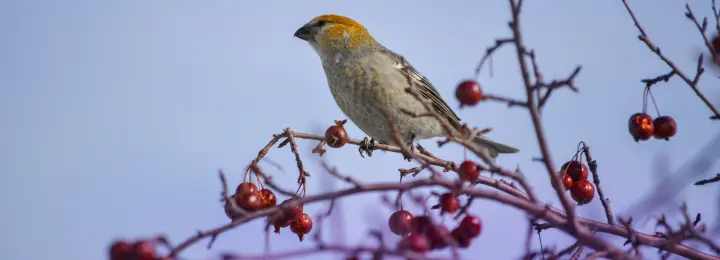
Helsinki Region – Urban Winter Wonderland
Location: Capital region including Helsinki, Espoo, and surrounding areas
Why It Matters: Even urban Helsinki provides excellent winter birding opportunities, proving that Finland’s winter bird life isn’t limited to wilderness areas
Urban Winter Birding Advantages:
- Accessibility: Public transport reaches most prime locations
- Feeding Station Network: Numerous parks maintain winter feeding programs
- Extended Hours: City lighting allows for longer observation periods
- Weather Shelter: Buildings and infrastructure provide wind protection
- Photographic Opportunities: Urban settings often provide interesting backdrops
Premier Urban Locations:
- Suomenlinna: Island fortress with winter seabird opportunities
- Keskuspuisto: Large central park system with diverse feeding stations
- Vanhankaupunginlahti: Urban wetland with winter waterfowl
- Nuuksio National Park: Accessible wilderness just outside the city
- Various City Parks: Each with unique feeding station communities
Urban Winter Specialties:
- Bohemian Waxwing: Urban berry trees create spectacular feeding opportunities
- Northern Finches: City feeding stations attract diverse finch communities
- Pine Grosbeak: Irregular but spectacular urban appearances
- Redpoll Species: Both Common and Arctic varieties at feeding stations
- Woodpecker Diversity: Urban forests support multiple species
- Corvid Intelligence: Hooded Crows and other corvids show urban adaptations
Strategic Urban Birding:
- Feeding Station Timing: Early morning (8-10 AM) often most productive
- Weather Sensitivity: Post-storm conditions often concentrate birds
- Multiple Location Strategy: Different parks offer different species mixes
Photography Ethics: Respect urban wildlife and other park users
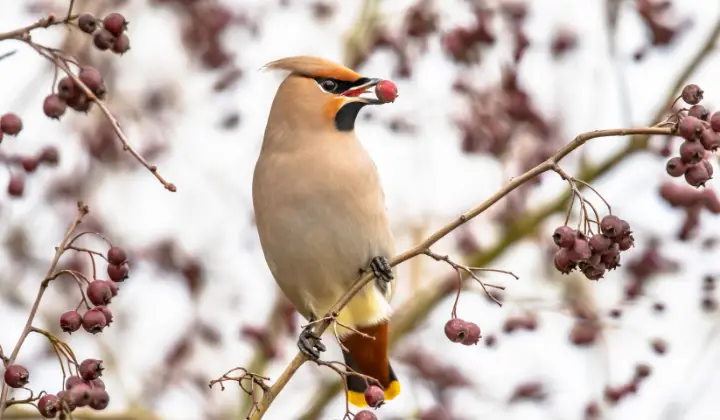
Location: Northern Finland above the Arctic Circle
Why It’s Essential: Home to species found nowhere else in Europe, offering true Arctic birding experiences
Arctic Winter Character:
- Polar Night: December-January with minimal or no daylight
- Unique Species: Birds adapted to extreme Arctic conditions
- Pristine Wilderness: Vast areas with minimal human impact
- Cultural Integration: Sámi reindeer herding creates unique landscapes
- Extreme Conditions: Temperatures regularly below -20°C (-4°F)
Lapland Winter Specialties:
- Willow Ptarmigan: Pure white winter plumage, perfectly adapted to snow
- Gyrfalcon: World’s largest falcon, occasionally ventures from breeding areas
- Snowy Owl: Irregular but spectacular visitor in some winters
- Snow Bunting: Large flocks in open tundra areas
- Lapland Bunting: Hardy northern specialists in winter flocks
- Common Redpoll: Arctic subspecies more abundant in far north
- Ravens: Arctic subspecies, larger and more robust than southern birds
Lapland Strategies:
- Limited Daylight Planning: Structure activities around available light
- Weather Window Utilization: Take advantage of calm, clear periods
- Local Knowledge Essential: Indigenous knowledge crucial for success
- Safety Priority: Remote areas require comprehensive emergency planning
- Cultural Respect: Understanding of Sámi traditions and reindeer herding
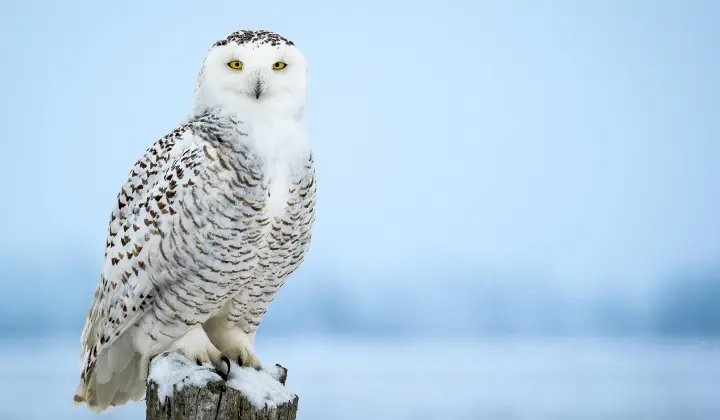
EastEastern Border Forests – Wilderness Encounters
Location: Eastern Finland along the Russian border
Why Visit: Pristine forests harbor species at the edge of their western range
Border Forest Characteristics:
- Unbroken Wilderness: Vast forests stretching to Russia
- Eastern Specialties: Species more common further east
- Limited Human Impact: Minimal development maintains pristine conditions
- Challenging Access: Remote locations require careful planning
- Unique Ecosystems: Bog and forest mosaics create diverse habitats
Eastern Winter Targets:
- Siberian Jay: More abundant than in western forests
- Pine Grosbeak: Regular winter resident in suitable years
- Three-toed Woodpecker: Specialized species of mature coniferous forests
- Siberian Tit: Hardy northern species at edge of range
- Capercaillie: Large forest grouse, impressive in winter conditions
- Ural Owl: Eastern forests provide optimal habitat
Border Region Strategy:
- Extended Stays: Remote areas reward longer visits
- Weather Dependence: Access roads may be challenging in severe weather
- Guide Recommendations: Local expertise particularly valuable
- Fuel and Supply Planning: Services limited in remote areas
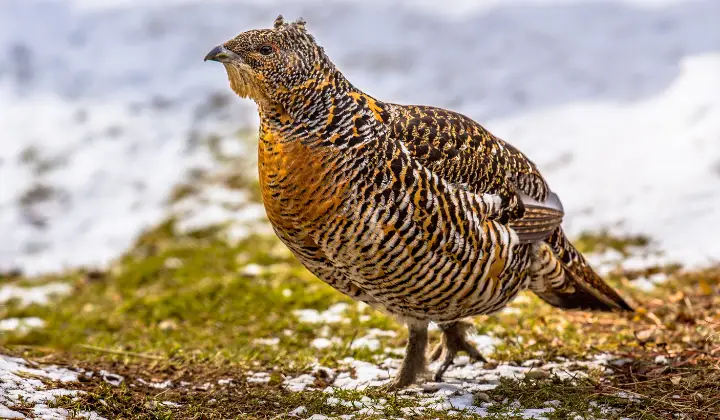
Feeding Station Birding: The Winter Lifeline
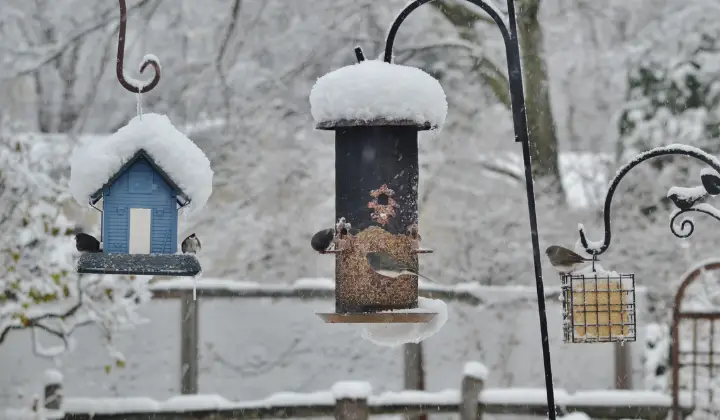
Understanding Feeding Station Dynamics
Why Feeding Stations Matter: In Finland’s harsh winter conditions, feeding stations become crucial congregation points where multiple species gather, creating exceptional birding and photography opportunities. These artificial food sources often mean the difference between survival and death for many resident species.
Types of Feeding Stations:
- Urban Park Feeders: Maintained by municipalities, typically offering mixed seeds
- Private Garden Feeders: Residential feeding setups often very productive
- Nature Center Stations: Professional setups designed for wildlife viewing
- Hotel and Lodge Feeders: Tourist accommodations often maintain extensive feeding programs
- Research Station Feeders: Scientific installations sometimes allow public viewing

Feeding Station Etiquette and Ethics
Responsible Feeding Practices:
- Appropriate Foods: High-fat, high-energy foods crucial for winter survival
- Consistent Supply: Regular feeding schedules help birds plan their energy use
- Clean Facilities: Hygiene prevents disease spread in concentrated populations
- Natural Behavior Preservation: Feeding supplements but doesn’t replace natural foraging
- Species-Appropriate Foods: Different species require different nutritional approaches
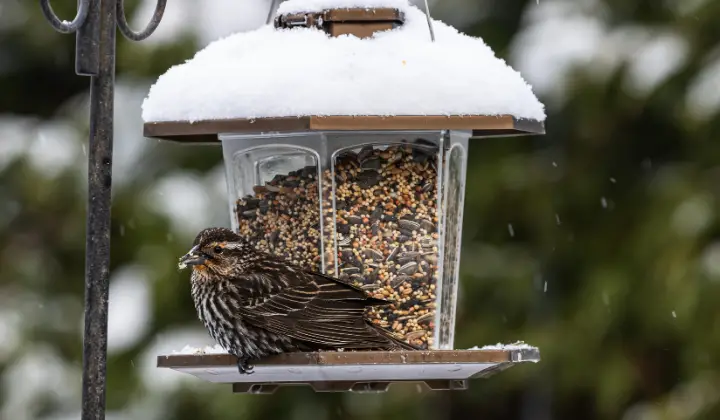
Observer Responsibilities:
- Quiet Approach: Avoid disturbing feeding birds
- Respectful Distance: Use optical equipment rather than approaching closely
- Photography Ethics: Bird welfare always takes priority over photographs
- Feeding Schedule Respect: Don’t interfere with established feeding routines
- Private Property Consideration: Always obtain permission for private feeders
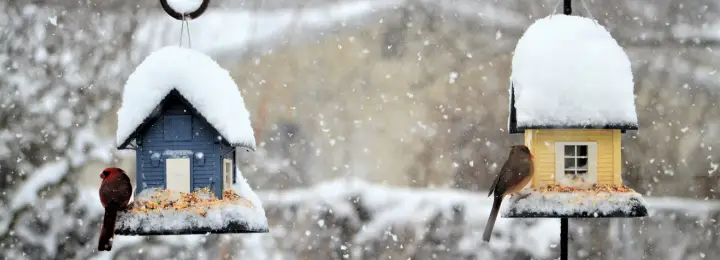
Species Commonly Found at Feeding Stations
Regular Urban Feeder Species:
- Great Tit: Dominant and aggressive at feeding stations
- Blue Tit: Acrobatic and energetic, often feeding upside-down
- Coal Tit: Smaller and more nervous than other tit species
- Marsh Tit: Distinguished by black cap and brown back
- Willow Tit: Similar to Marsh Tit but with different habitat preferences
- Nuthatch: Distinctive head-down feeding behavior
- Tree Creeper: Spirals up tree trunks searching for insects

Irruptive Species at Feeders:
- Pine Grosbeak: Large, colorful finches in irruption years
- Bohemian Waxwing: Flocks can strip berry trees in hours
- Common Redpoll: Small, streaky finches with red cap patches
- Arctic Redpoll: Paler version of Common Redpoll, requires careful identification
- European Siskin: Yellow-green finches, often in mixed flocks
- Red Crossbill: Specialized bill for extracting seeds from cones
- Parrot Crossbill: Larger bill adapted for larger pine cones
Occasional Feeder Visitors:
- Great Spotted Woodpecker: Regular at suet feeders
- Lesser Spotted Woodpecker: Smaller and more secretive than Great Spotted
- Bullfinch: Colorful but often shy feeder visitors
- Greenfinch: Sturdy finches with distinctive yellow wing patches
- Jay: Intelligent corvids caching food for later retrieval
Winter wildlife photography in Finland with Finnature
Owl Birding: Finland's Crown Jewel Experience

The Complete Guide to Finland’s Winter Owls
Finland’s reputation as Europe’s premier owl destination is well-deserved, with winter providing optimal conditions for observing these magnificent predators. Finland hosts 10 owl species, making it one of Europe’s most diverse owl destinations, and winter conditions make several species more accessible than at any other time of year.
Individual Species Profiles

Great Grey Owl (Strix nebulosa) – The Phantom of the Forest
- Size: Finland’s largest owl, with impressive facial disc
- Habitat: Mature coniferous forests with open clearings for hunting
- Winter Behavior: More active during daylight hours, often hunts from perches
- Identification: Massive size, grey plumage, distinctive yellow eyes, prominent facial disc
- Finding Tips: Look for them perched on roadside posts or forest edge trees
- Best Locations: Kuusamo region, forests around Oulu, eastern Finland wilderness
- Photography Notes: Often tolerates careful approach, spectacular against snow
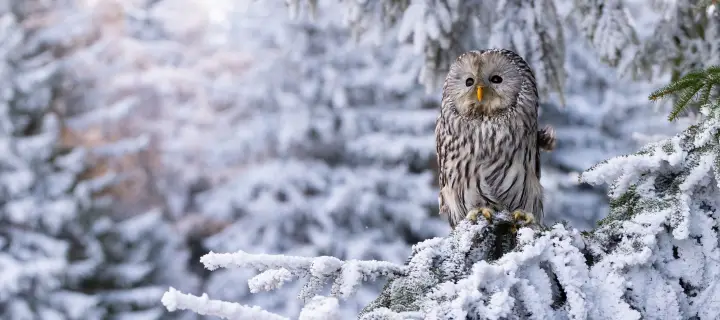
Ural Owl (Strix uralensis) – The Forest Giant
- Size: Second largest Finnish owl, stocky build
- Habitat: Mixed and deciduous forests, often near water
- Winter Behavior: Territorial calling increases, making detection easier
- Identification: Brown and white streaked plumage, dark eyes, rounded facial disc
- Finding Tips: Listen for deep hooting calls, especially in early morning
- Best Locations: Southern and central Finland forests
- Behavioral Notes: Can be aggressive during breeding season, maintain respectful distance

Pygmy Owl (Glaucidium passerinum) – The Tiny Terror
- Size: Europe’s smallest owl, barely larger than a sparrow
- Habitat: Coniferous forests, often uses old woodpecker holes
- Winter Behavior: Diurnal activity makes winter sightings more likely
- Identification: Small size, spotted plumage, false eyes on back of neck
- Finding Tips: Look for small birds mobbing behavior indicating owl presence
- Best Locations: Widespread in suitable forest habitat
- Behavioral Notes: Fierce predator despite tiny size, caches prey in winter

Northern Hawk-Owl (Surnia ulula) – The Daylight Hunter
- Size: Medium-sized with distinctive hawk-like appearance
- Habitat: Open forests, forest edges, cleared areas with scattered trees
- Winter Behavior: Primarily diurnal, often seen hunting from prominent perches
- Identification: Long tail, hawk-like flight, brown and white barred plumage
- Finding Tips: Often perches conspicuously on dead snags or pole tops
- Best Locations: Northern Finland, open bog areas, forest clearings
- Unique Features: Most diurnal of Finnish owls, excellent daytime viewing opportunities

Boreal Tengmalm’s Owl (Aegolius funereus) – The Forest Whisperer
- Size: Small to medium, compact build
- Habitat: Dense coniferous forests, requires old-growth characteristics
- Winter Behavior: Secretive but occasionally located by experienced guides
- Identification: Chocolate brown above, white below, distinctive facial pattern
- Finding Tips: Extremely difficult without local expertise and playback techniques
- Best Locations: Remote forests of Kuusamo, eastern wilderness areas
- Challenge Level: Considered one of Finland’s most difficult owls to locate
Owl Finding Strategies
Systematic Forest Searching:
- Dawn Patrol: Early morning often provides best opportunities
- Perch Identification: Learn to spot potential owl perches from distance
- Habitat Reading: Different species prefer different forest types and ages
- Sound Recognition: Learn calls of target species for audio detection
- Track Reading: Snow conditions may reveal owl hunting signs

Technology and Tools:
- Powerful Binoculars: Essential for scanning forest edges and clearings
- Spotting Scope: Useful for detailed observation without disturbance
- Playback Equipment: Controversial but sometimes necessary tool
- Recording Device: Document calls for later analysis and confirmation
- GPS Navigation: Mark successful locations for future reference
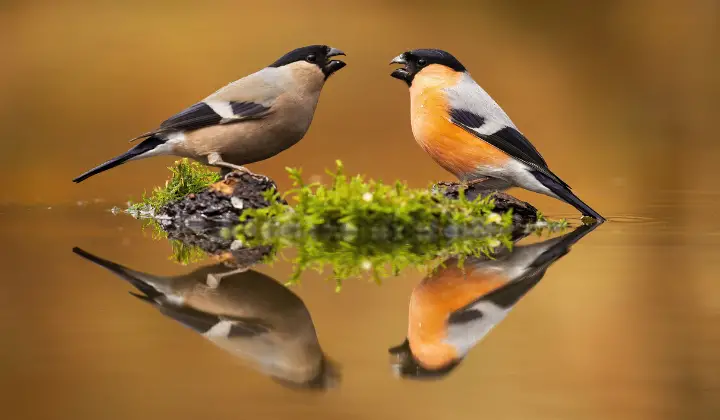
Ethical Owl Watching:
- Disturbance Minimization: Never approach nesting or roosting owls closely
- Playback Restrictions: Use sparingly and never during breeding season
- Habitat Respect: Stay on established trails and avoid sensitive areas
- Information Sharing: Report sightings responsibly to avoid over-disturbance
- Professional Guidance: Consider hiring local guides for rare species
Practical Winter Birding Guide

Essential Winter Birding Equipment
Clothing System for Extreme Cold: Winter birding in Finland requires serious attention to staying warm and dry during extended periods of relative inactivity in harsh conditions.
Base Layer:
- Merino Wool or Synthetic: Moisture-wicking materials crucial
- Long Underwear: Both top and bottom essential
- Wool Socks: Multiple pairs for extended trips
- Liner Gloves: Thin gloves worn under heavier mittens
Insulation Layer:
- Down or Synthetic Insulation: Vest and jacket for variable conditions
- Fleece: Easy to adjust for temperature changes
- Insulated Pants: Essential for standing/sitting in cold conditions
- Neck Gaiter: Crucial for protecting neck and face
Outer Shell:
- Windproof/Waterproof Jacket: Protection from wind and precipitation
- Shell Pants: Over insulation layer for complete protection
- Gaiters: Keep snow out of boots
- Hat Selection: Multiple options for different conditions
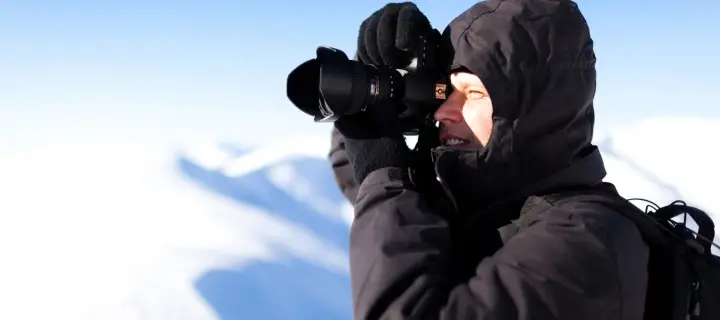
Extremities Protection:
- Insulated Boots: Rated for expected temperatures, waterproof
- Heavy Mittens: Superior warmth retention compared to gloves
- Boot Warmers: Chemical heating pads for extreme conditions
- Face Protection: Balaclava or face mask for severe weather
Optical Equipment Adaptations:
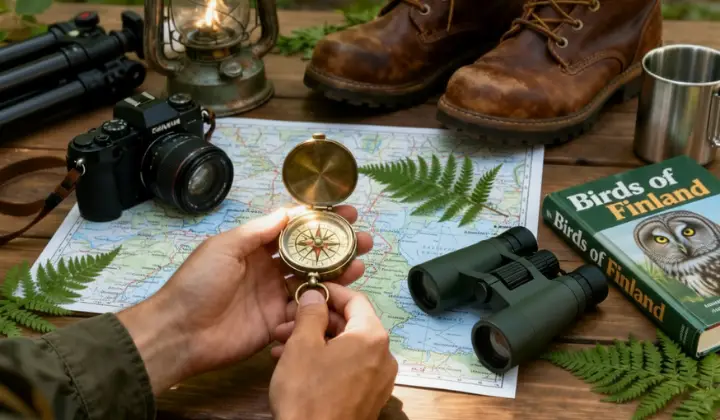
- Binocular Considerations: Rubber eyecups essential for eyeglass wearers
- Tripod Stability: Heavier tripods perform better in wind
- Lens Fogging Prevention: Allow equipment to acclimate gradually
- Battery Management: Cold weather dramatically reduces battery life
- Equipment Protection: Sealed bags prevent condensation damage
Managing Short Daylight Hours
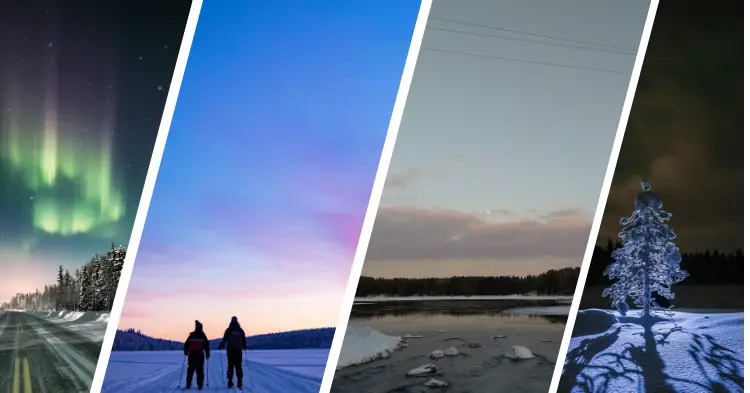
December/January Light Conditions:
- Southern Finland: Approximately 6 hours of daylight
- Northern Finland: As little as 2-4 hours in Lapland
- Civil Twilight: Extended periods of usable light before sunrise and after sunset
- Blue Hour: Special lighting conditions excellent for photography
Maximizing Limited Light:
- Pre-Dawn Preparation: Be in position before first light
- Efficient Transportation: Minimize travel time between locations
- Strategic Location Selection: Choose sites offering multiple species opportunities
- Flexible Scheduling: Adapt plans based on weather and light conditions
- Indoor Planning: Use dark hours for research, planning, and equipment maintenance
Activity Planning:
- Priority Species: Focus on most desired species during peak light hours
- Feeding Station Visits: Often productive throughout limited daylight
- Travel Scheduling: Use dark hours for longer distance travel
- Rest and Recovery: Short days require efficient use of daylight for birding
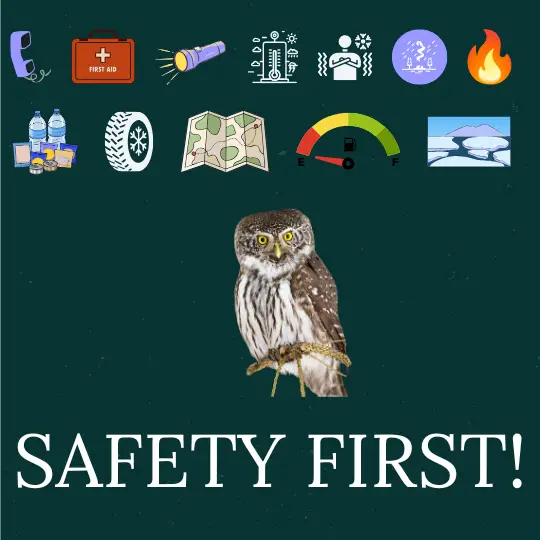
Safety Considerations in Winter Wilderness
Cold Weather Hazards:
- Hypothermia Risk: Recognize early symptoms and prevention strategies
- Frostbite Prevention: Particular attention to extremities
- Ice Conditions: Assess frozen water safety before venturing onto ice
- Avalanche Awareness: Relevant in some mountainous regions
- Equipment Failure: Redundant systems for critical equipment
Emergency Preparedness:
- Communication Devices: Satellite communicator for remote areas
- Emergency Shelter: Bivvy sack or emergency shelter system
- Fire Starting: Multiple methods for emergency warming
- Emergency Food: High-calorie emergency rations
- First Aid Kit: Cold weather specific medical supplies
Vehicle Considerations:
- Winter Tires: Mandatory in Finland during winter months
- Emergency Kit: Shovel, tow rope, emergency supplies
- Fuel Management: Keep tank full, carry extra fuel for remote areas
- Route Planning: Inform others of travel plans and expected return
- Weather Monitoring: Check conditions and forecasts regularly
Accommodation and Logistics
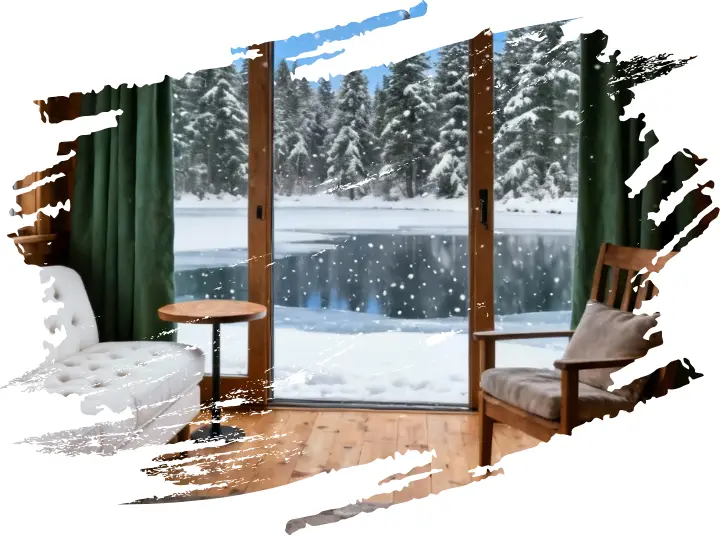
Accommodation Types:
- Hotels: Comfortable but expensive, good for urban-based birding
- Wilderness Lodges: Often cater specifically to wildlife watchers
- Cabin Rentals: Independent accommodation with kitchen facilities
- Camping: Hardy souls only, specialized winter camping equipment required
Food and Supply Considerations:
- High Calorie Requirements: Cold weather birding burns significant energy
- Thermos Management: Hot drinks essential for warmth and morale
- Meal Planning: Convenient, high-energy foods for field days
- Supply Availability: Remote areas have limited shopping opportunities
Transportation Planning:
- 4WD/AWD Vehicles: Often necessary for forest access roads
- Snow Chains: Legal requirement in some conditions
- GPS Navigation: Essential for forest roads and remote locations
- Fuel Strategy: Limited services in remote areas, plan accordingly
Understanding Winter Bird Behavior and Adaptations

Survival Strategies in Extreme Cold
Physiological Adaptations: Winter residents and visitors display remarkable adaptations for surviving Finland’s harsh conditions:
- Feather Modifications: Increased down density, longer contour feathers
- Metabolic Adjustments: Enhanced fat storage and increased metabolic rates
- Behavioral Thermoregulation: Specific postures and behaviors for heat conservation
- Circulation Adaptations: Counter-current heat exchange in extremities
- Dietary Changes: Shift to high-fat, high-energy food sources

Social Survival Strategies:
- Flock Formation: Mixed species flocks provide multiple survival benefits
- Information Sharing: Flocks efficiently locate food sources
- Predator Detection: Increased vigilance through group living
- Huddling Behavior: Physical contact for heat conservation
- Hierarchy Establishment: Pecking orders determine access to resources
Feeding Behavior Modifications
Energy Techniques
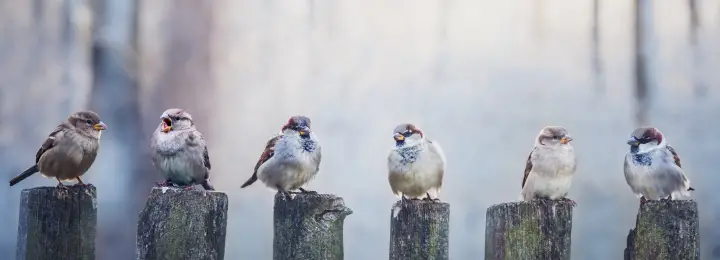
Energy Conservation Techniques:
- Reduced Activity: Minimizing unnecessary movement conserves energy
- Strategic Feeding: Concentrated feeding periods during optimal conditions
- Cache Utilization: Many species rely on cached food stores
- Microhabitat Selection: Seeking sheltered feeding locations
- Feeding Schedule Optimization: Timing feeding with weather conditions
Dietary Adaptations:
- Fat Emphasis: Preference for high-fat foods like seeds and suet
- Protein Requirements: Continued need for protein despite reduced insect availability
- Mineral Needs: Salt and grit become important dietary components
- Water Sources: Finding liquid water becomes critical challenge
- Food Quality Assessment: Ability to select most nutritious available foods
Breeding Season Preparations

Early Breeding Activity: Some species begin breeding preparations surprisingly early:
- Territory Establishment: Owls begin territorial calling in midwinter
- Pair Bond Strengthening: Resident pairs reinforce relationships
- Nest Site Assessment: Investigation of potential breeding locations
- Courtship Feeding: Male birds begin feeding potential mates
- Physiological Preparation: Hormonal changes triggered by photoperiod
Weather Timing Strategies:
- Phenology Matching: Timing breeding with optimal weather conditions
- Food Availability Prediction: Breeding timed with anticipated food abundance
- Nest Site Preparation: Early selection and preparation of breeding locations
- Mate Selection: Quality assessment during harsh conditions reveals fitness
Photography in Winter Conditions
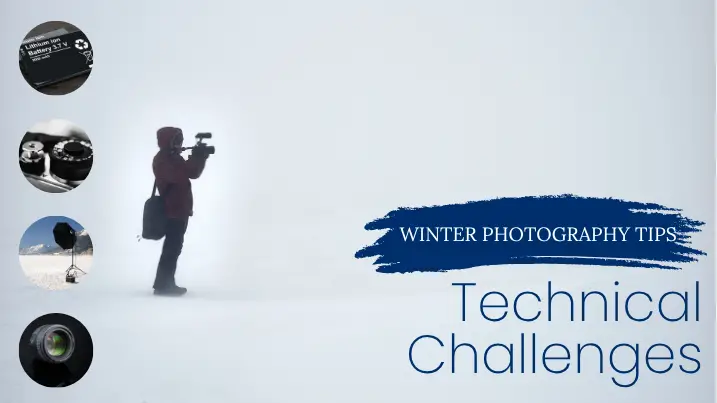
Technical Challenges and Solutions
Equipment Management in Extreme Cold:
- Battery Performance: Cold weather dramatically reduces battery life
- Condensation Prevention: Temperature transitions require careful equipment management
- Optical Quality: Frost and fogging can compromise image quality
- Manual Dexterity: Heavy gloves make camera operation challenging
- Equipment Protection: Moisture and extreme cold can damage sensitive electronics
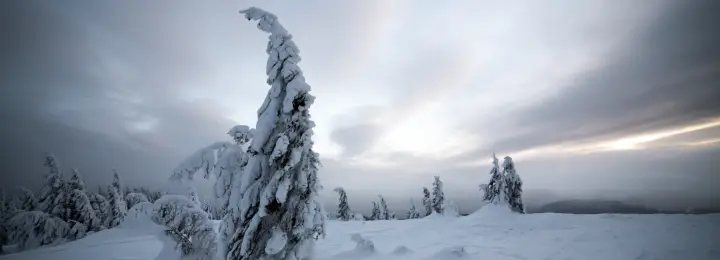
Photographic Opportunities:
- High Contrast Scenarios: Snow provides dramatic contrast for bird photography
- Behavioral Documentation: Winter behaviors often more predictable and approachable
- Environmental Context: Snow-covered landscapes create stunning backdrops
- Feeding Station Access: Close approach opportunities at feeding areas
- Low Light Expertise: Short days require advanced low-light techniques
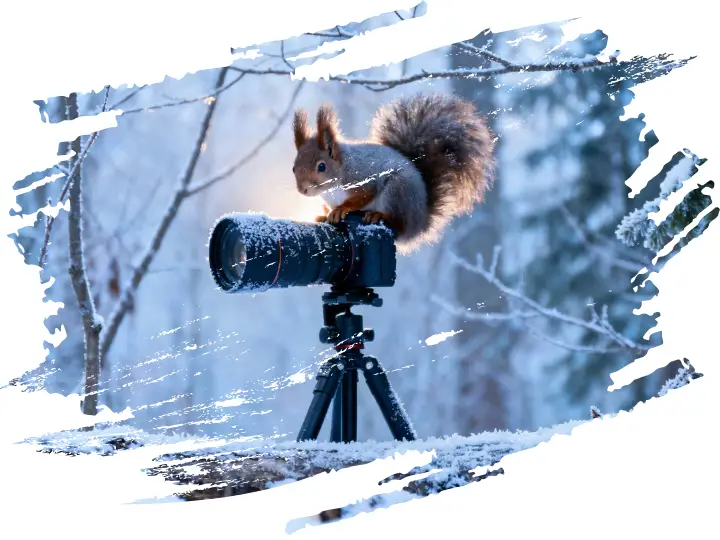
Ethical Photography Considerations:
- Disturbance Minimization: Stressed birds have reduced survival chances
- Energy Conservation: Avoid causing birds to waste precious energy reserves
- Feeding Station Ethics: Don’t interfere with birds’ access to food sources
- Rare Species Protection: Particularly important for owls and other sensitive species
- Weather Sensitivity: Poor weather requires extra caution around wildlife
Composition and Lighting Strategies
Winter Light Characteristics:
- Low Angle Sun: Creates dramatic lighting but for limited periods
- Blue Hour Extensions: Long twilight periods offer unique lighting opportunities
- Overcast Conditions: Often provide even, flattering light for bird photography
- Snow Reflection: Acts as natural reflector, filling shadows
- Golden Hour Emphasis: Brief but spectacular lighting during short days

Compositional Elements:
- Minimalist Backgrounds: Snow provides clean, uncluttered backgrounds
- Environmental Context: Include winter habitat elements in compositions
- Behavioral Focus: Document winter-specific behaviors and interactions
- Weather Integration: Incorporate falling snow, frost, and ice into images
- Seasonal Storytelling: Images should convey the winter experience
Conservation Context and Citizen Science
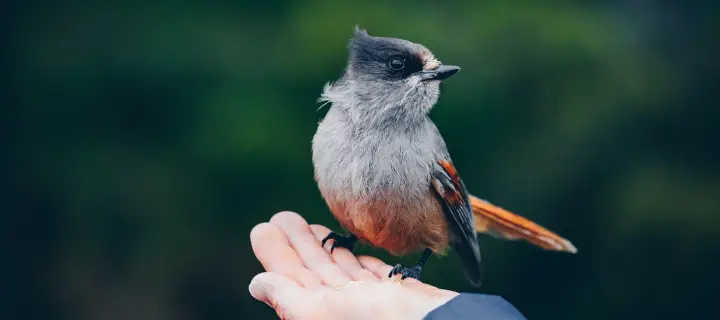
Winter Bird Conservation Challenges
Climate Change Impacts: Winter birding in Finland increasingly reflects the impacts of changing climate patterns:
- Range Shifts: Traditional winter residents may move further north
- Timing Changes: Breeding seasons may begin earlier, affecting winter behavior
- Weather Extremes: More variable weather patterns affect survival strategies
- Food Source Changes: Altered plant communities affect seed and berry availability
- Ice Conditions: Changing freeze-thaw patterns affect water access
Habitat Pressures:
- Forest Management: Logging practices affect owl and forest bird habitat
- Urban Development: Expansion impacts traditional feeding and roosting areas
- Feeding Station Dependence: Questions about artificial food source impacts
- Recreation Pressure: Increased winter recreation may disturb sensitive species
- Pollution Impacts: Atmospheric pollution affects forest health and bird populations
Contributing to Winter Bird Conservation
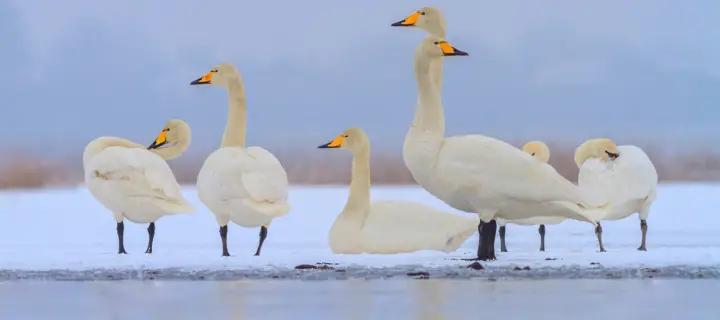
Citizen Science Opportunities:
- eBird Submissions: Winter sightings provide crucial data on species distribution
- Christmas Bird Counts: Participate in established monitoring programs
- Feeder Watch Programs: Document species using feeding stations
- Phenology Studies: Record timing of behaviors and seasonal changes
- Photo Documentation: Images provide evidence of species presence and behavior
Supporting Conservation Efforts:
- Responsible Birding: Practice low-impact observation techniques
- Habitat Protection: Support organizations working to preserve critical habitats
- Research Support: Contribute to or support ongoing bird research projects
- Education and Outreach: Share knowledge and inspire others to appreciate winter birds
- Sustainable Tourism: Choose accommodations and services that prioritize environmental responsibility
Research and Monitoring Programs

Academic Research Opportunities:
- University Collaborations: Some institutions welcome skilled volunteers
- Long-term Studies: Contribute to ongoing monitoring of owl and other populations
- Migration Research: Winter populations provide insights into migration patterns
- Behavioral Studies: Document winter adaptations and survival strategies
- Technology Integration: GPS tracking and remote sensing projects

International Cooperation:
- Arctic Council Initiatives: Finland participates in circumpolar bird monitoring
- EU Bird Directives: Conservation efforts coordinated across Europe
- Migration Corridor Protection: International cooperation for flyway conservation
- Climate Research: Winter bird data contributes to climate change research
- Species Action Plans: Coordinated efforts for threatened species
Planning Your Winter Birding Adventure

Trip Planning Essentials
Seasonal Timing Considerations:
- December: Shortest days but excellent owl activity
- January: Peak winter conditions, maximum feeding station activity
- February: More stable weather, continued excellent birding
- March: Late winter species, early signs of spring preparation
Duration Recommendations:
- Weekend Trips: Possible but limited by short daylight hours
- Week-Long Adventures: Optimal for experiencing diverse locations and species
- Extended Expeditions: Allow for weather delays and multiple target species
- Flexible Scheduling: Weather dependence requires adaptable plans
Regional Combinations:
- Southern Circuit: Helsinki, southern coast, accessible forests
- Northern Adventure: Oulu, Kuusamo, Lapland wilderness
- Eastern Wilderness: Border forests, remote owl locations
- Comprehensive Tour: Multiple regions over extended period
Weather and Conditions Planning

Weather Window Strategy:
- High Pressure Systems: Optimal conditions for owl searching and photography
- Cold Snap Timing: Often triggers increased feeding station activity
- Snow Conditions: Fresh snow improves tracking and visual contrast
- Wind Considerations: Calm conditions essential for forest birding
- Temperature Thresholds: Below -20°C requires enhanced safety preparation

Flexible Itinerary Development:
- Multiple Location Options: Weather may dictate location changes
- Indoor Alternatives: Museums, visitor centers for severe weather days
- Equipment Maintenance: Cold weather requires regular gear attention
- Recovery Periods: Intensive cold weather birding requires rest days
- Local Intelligence: Connect with Finnish birding community for current conditions
Budgeting and Costs
Finland Winter Birding Costs:
- Accommodation: Higher in winter due to heating and limited supply
- Transportation: 4WD rental, fuel, potential flight costs
- Guided Services: Professional guides charge premium rates
- Specialized Equipment: Cold weather gear represents significant investment
- Food and Supplies: Higher costs in remote areas

Cost Management Strategies:
- Group Travel: Shared accommodation and transportation costs
- Self-Guided Options: Independent travel reduces guide costs
- Equipment Rental: Some specialized gear available for rental
- Off-Peak Timing: Slightly lower costs in early or late winter
- Local Accommodation: Finnish hospitality often includes excellent local knowledge
Conclusion: Embracing the Magic of Finnish Winter Birding
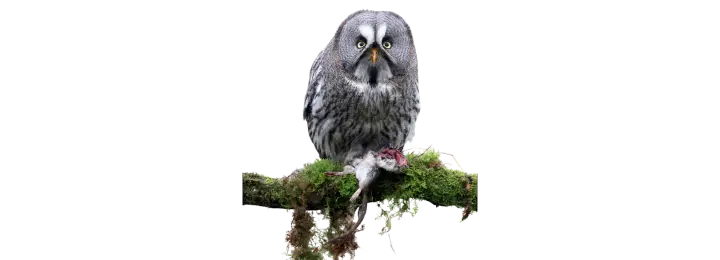
Winter birding in Finland represents one of Europe’s most challenging yet rewarding wildlife experiences.
The combination of extreme conditions, remarkable species, and pristine winter landscapes creates opportunities for encounters that exist nowhere else on the continent.
From the moment a Great Grey Owl materializes through snow-laden spruce boughs to the spectacular sight of a thousand Bohemian Waxwings descending on urban berry trees, winter in Finland offers birding experiences that define a lifetime of memories.
The season demands respect, preparation, and patience, but rewards those investments with encounters that transcend ordinary birding experiences. Standing in a silent forest at -25°C, watching your breath freeze in the air as a Pygmy Owl calls from the darkness, connects you to the raw power and beauty of nature in ways that gentler seasons simply cannot match.
The short days and harsh conditions create unique opportunities for intimate wildlife encounters. Many species become more approachable during winter’s survival-focused conditions, leading to observations and photographic opportunities that would be impossible during other seasons. The snow-covered landscape transforms familiar forests into alien wonderlands where every bird sighting feels like a precious gift.
For visiting birders, Finnish winter birding offers more than just excellent species opportunities – it provides cultural immersion in a society that has learned to not just survive but thrive in challenging northern conditions.
The warmth of Finnish hospitality becomes even more meaningful when experienced after a day spent in subzero temperatures searching for owls in pristine forests.
The conservation context adds depth and meaning to winter birding experiences. Every sighting contributes to our understanding of how northern species adapt to extreme conditions, and climate change makes these observations increasingly valuable for scientific understanding. Participating in citizen science efforts transforms recreational birding into meaningful conservation contribution.
Winter birding in Finland changes you. It builds resilience, patience, and appreciation for the remarkable adaptations that allow life to flourish in seemingly impossible conditions. It creates profound respect for the indigenous peoples who have thrived in these conditions for millennia, and for the modern Finns who continue that tradition of northern competence and hospitality.
The memories created during Finnish winter birding adventures become touchstone experiences that inform all future birding. The silence of snow-muffled forests, the ethereal beauty of frost-covered trees, the heart-stopping moment when an owl’s golden eyes lock with yours across a frozen clearing – these experiences become part of who you are as a naturalist and as a person.
Plan carefully, prepare thoroughly, embrace the challenges, and allow yourself to be transformed by one of Europe’s most remarkable birding experiences. Finland’s winter forests are waiting to share their secrets with those bold enough to seek them out.
Remember: Winter conditions in Finland can be extreme and potentially dangerous.
Always prioritize safety, inform others of your plans, carry appropriate emergency equipment, and consider hiring local guides for challenging species and remote locations.
Weather conditions and species abundance can vary significantly from year to year – check current conditions and recent sightings before finalizing your plans.

